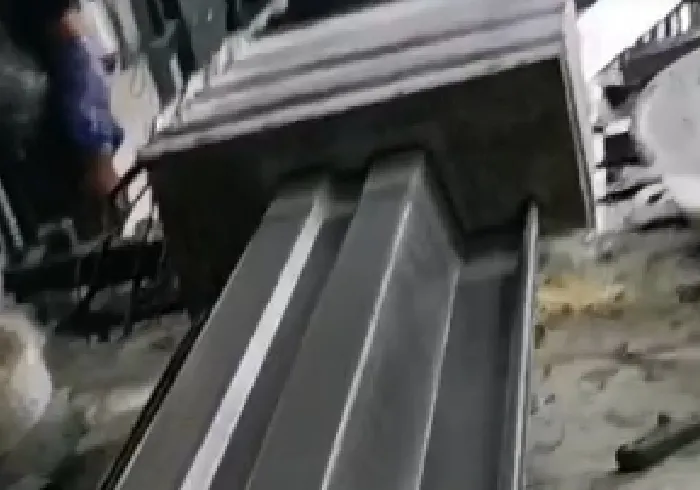loading...
- No. 9, Xingyuan South Street, Dongwaihuan Road, Zaoqiang County, Hengshui, Hebei, China
- admin@zjcomposites.com
- +86 15097380338
- Welcome to visit our website!
Exploring the Applications and Benefits of FRP C Channels in Modern Engineering Projects
The Versatility of FRP C Channels
Fiber Reinforced Polymer (FRP) has emerged as a revolutionary material in various industries due to its exceptional strength-to-weight ratio, corrosion resistance, and durability. Among the various forms in which FRP can be manufactured, FRP C channels have garnered significant attention for their unique advantages and applications. This article explores the characteristics, benefits, and applications of FRP C channels, highlighting their importance in modern engineering and construction.
What are FRP C Channels?
FRP C channels are structural components shaped in a C form and constructed from fiber-reinforced polymers. They typically consist of a thermosetting resin reinforced with glass or carbon fibers, making them lightweight yet strong. These channels are available in various sizes and thicknesses, enabling them to meet diverse structural requirements.
Advantages of FRP C Channels
1. Corrosion Resistance One of the primary benefits of FRP C channels is their remarkable resistance to corrosion. Unlike traditional steel or aluminum, FRP does not rust or corrode when exposed to harsh environmental conditions, including moisture, chemicals, and salt. This characteristic makes them ideal for use in marine environments, wastewater treatment facilities, and chemical processing plants.
2. Lightweight FRP C channels weigh significantly less than their metal counterparts, facilitating easier handling, transportation, and installation. This lightness reduces the load on supporting structures, making them an attractive option for various engineering applications.
3. High Strength-to-Weight Ratio Despite their lightweight nature, FRP C channels exhibit a high strength-to-weight ratio, making them capable of bearing heavy loads without compromising structural integrity. They can be designed to withstand various stresses, making them suitable for demanding applications.
4. Design Flexibility The manufacturing process of FRP allows for customized designs tailored to specific applications. Manufacturers can produce FRP C channels in a range of sizes, lengths, and colors, providing designers with the flexibility needed to meet aesthetic and functional requirements.
5. Thermal and Electrical Insulation FRP C channels exhibit excellent thermal and electrical insulation properties. This feature makes them a preferred choice in electrical applications or environments where thermal insulation is essential.
frp c channel

Applications of FRP C Channels
FRP C channels are used across a variety of industries due to their numerous advantages. Some common applications include
- Construction In building structures, FRP C channels are often used for framing, support beams, and bracing. Their resistance to corrosion and lightweight properties make them ideal for both indoor and outdoor applications.
- Infrastructure These channels are utilized in the construction of bridges, walkways, and retaining walls, where strength and durability are paramount. Their corrosion resistance ensures longevity, especially in challenging environments.
- Marine Industry FRP C channels find extensive use in boat building and dock construction. Their resistance to saltwater corrosion and overall durability make them a suitable choice for marine applications.
- Chemical Plants Due to their resistance to corrosive substances, FRP C channels are employed in chemical processing and storage facilities. They help maintain structural integrity in environments that would typically degrade metal components.
- Telecommunication FRP C channels are increasingly used in telecommunications for support structures like poles and masts. Their lightweight nature facilitates easy installation and maintenance.
Conclusion
The adoption of FRP C channels represents a significant advancement in materials technology. Their combination of lightweight construction, high strength, corrosion resistance, and design flexibility makes them an invaluable asset in various industries. As more sectors recognize the benefits of FRP, the demand for these innovative structural components is likely to grow, paving the way for a more sustainable and resilient future in engineering and construction.
-
GRP Structures: The Future of Lightweight, High-Performance EngineeringNewsJun.20,2025
-
FRP Water Tank: High-Performance Storage for Corrosive and Clean Water SystemsNewsJun.20,2025
-
FRP Square Tube: The New Industry Standard for Chemical and Structural ApplicationsNewsJun.20,2025
-
FRP Pultruded Profiles: The Ultimate Choice for Lightweight Structural StrengthNewsJun.20,2025
-
FRP Handrails: The Safer, Smarter, and Stronger Choice for Modern InfrastructureNewsJun.20,2025
-
FRP Grating: The Smart Solution for Durable, Lightweight Industrial FlooringNewsJun.20,2025
-
Why Choose a Galvanized Water Tank for Your Storage NeedsNewsMay.21,2025
